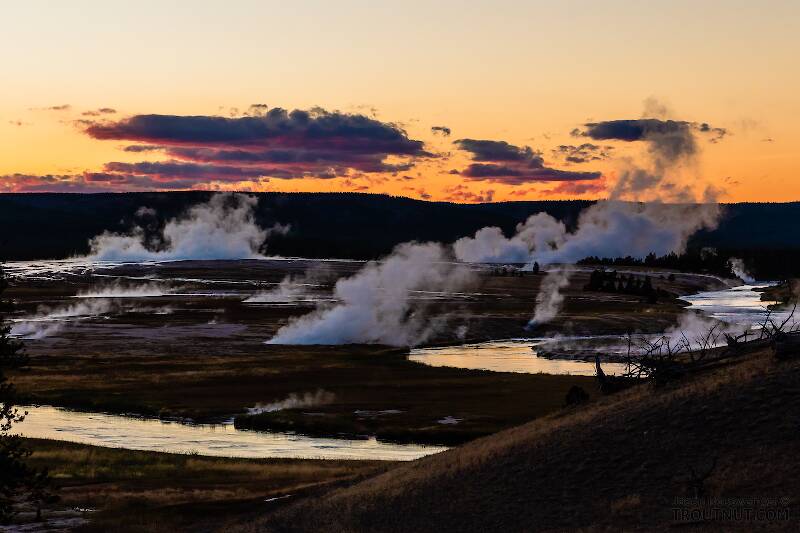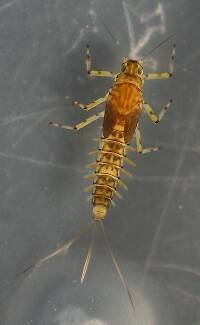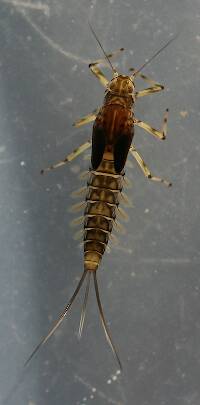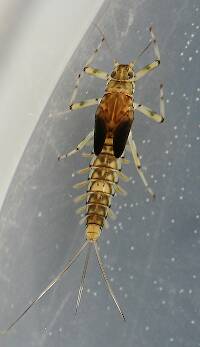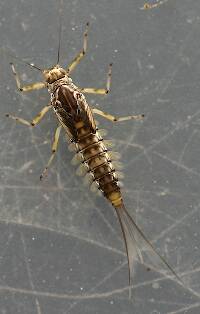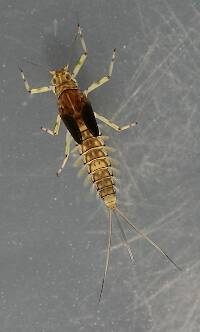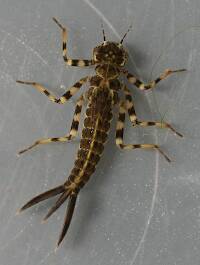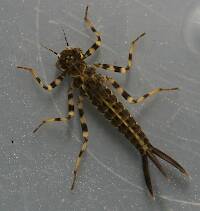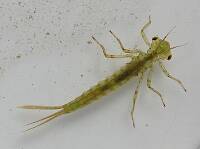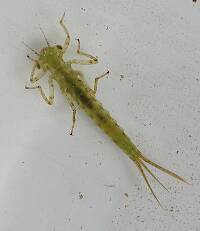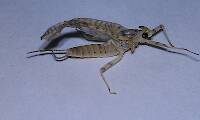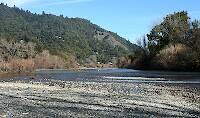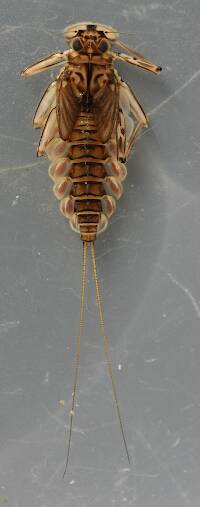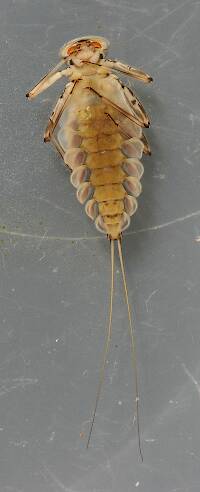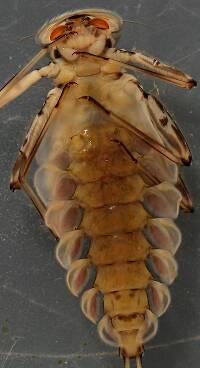
Hex Mayflies
Hexagenia limbata
The famous nocturnal Hex hatch of the Midwest (and a few other lucky locations) stirs to the surface mythically large brown trout that only touch streamers for the rest of the year.
Featured on the forum

Troutnut is a project started in 2003 by salmonid ecologist Jason "Troutnut" Neuswanger to help anglers and
fly tyers unabashedly embrace the entomological side of the sport. Learn more about Troutnut or
support the project for an enhanced experience here.
Xavier_Carp has attached these 4 pictures to aid in identification. The message is below.
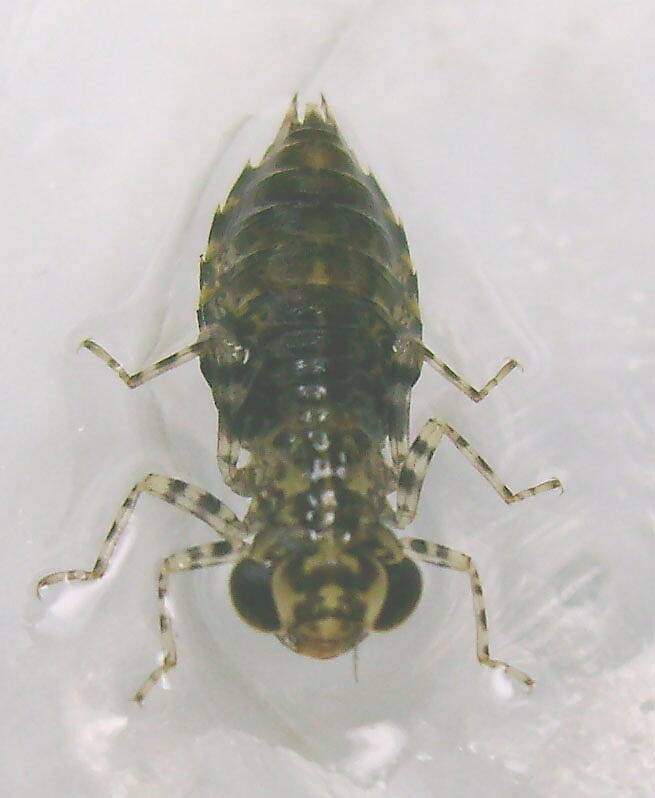
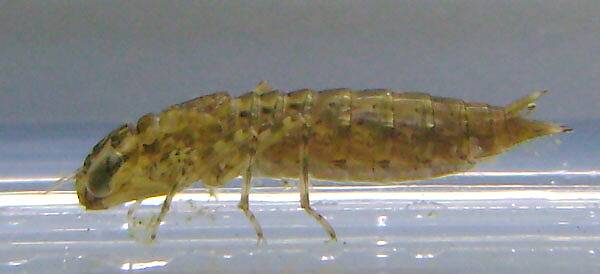
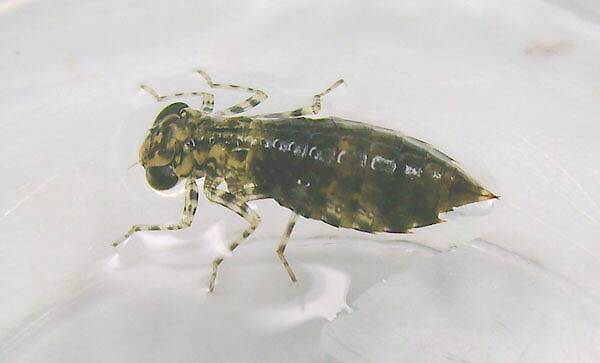
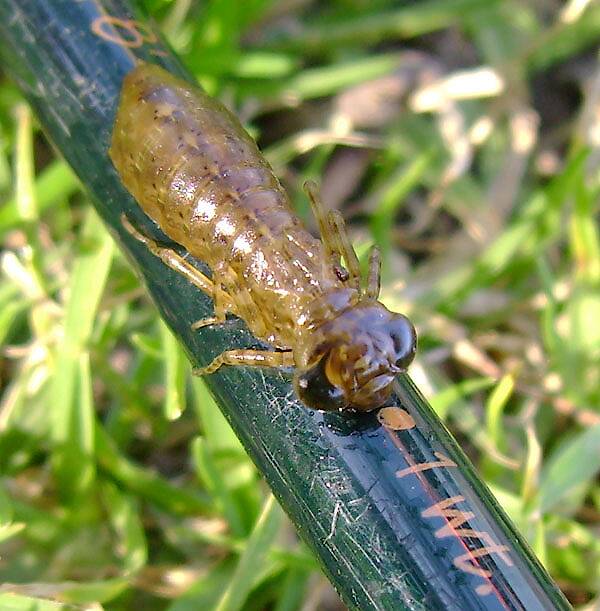
Xavier_Carp
Posts: 13
Posts: 13
Xavier_Carp on Aug 27, 2007August 27th, 2007, 11:55 am EDT
Can you give me a clue about this dragon fly nymphs??
Taxon on Aug 28, 2007August 28th, 2007, 11:30 am EDT
Xavier_Carp-
If I were to hazard a guess, it would be that the 1st and 3rd photos might be of family Aeshnidae, and that the 2nd and 4th photos might be of family Libellulidae. Both families are most commonly collected along the edges of lakes and ponds. However, identifying dragonfly nymphs is much more difficult if photographed out of the water, and even more so, if they have not reached full maturity.
Hopefully, someone here will be more experienced identifying dragonflies, and can give you more than my admittedly lame guesses.
If I were to hazard a guess, it would be that the 1st and 3rd photos might be of family Aeshnidae, and that the 2nd and 4th photos might be of family Libellulidae. Both families are most commonly collected along the edges of lakes and ponds. However, identifying dragonfly nymphs is much more difficult if photographed out of the water, and even more so, if they have not reached full maturity.
Hopefully, someone here will be more experienced identifying dragonflies, and can give you more than my admittedly lame guesses.
Quick Reply
Related Discussions
Topic
Replies
Last Reply
Re: Help to get some specimens of the isopod Caecidotea communis
In the Arthropod Family Asellidae by Leonardo
In the Arthropod Family Asellidae by Leonardo
11
Mar 29, 2013
by Leonardo
by Leonardo

